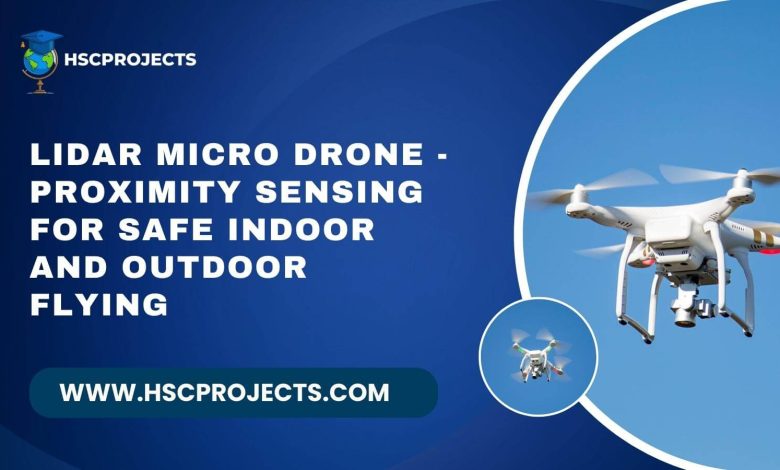
LIDAR Micro Drone – Proximity Sensing for Safe Indoor and Outdoor Flying
Introduction
Drones have become ubiquitous in various industries, from aerial photography to agricultural monitoring. However, their application has been limited by size, noise, and cost. Enter the LIDAR Micro Drone—a small, affordable, and intelligent flying machine designed for both indoor and outdoor use. This article delves into the features, components, and advantages of using a LIDAR Micro Drone.

Why Choose a LIDAR Micro Drone?
The LIDAR Micro Drone offers several advantages over traditional drones:
- Small Size and Low Cost: Unlike other drones that can be expensive and bulky, this mini drone is budget-friendly and compact, making it accessible for hobbyists and professionals alike.
- LIDAR-Based Obstacle Sensing: Equipped with a LIDAR sensor, the drone can detect obstacles in real-time, reducing the risk of collisions.
- Versatility: Its small size allows for takeoff from confined spaces like your hand, or even from trees in dense forests.
- Quiet Operation: The drone’s small motors produce less noise, making it ideal for indoor use or in noise-sensitive areas.
Components
The LIDAR Micro Drone is built with the following components:
- Arduino Pro Mini: Acts as the brain of the drone, interpreting sensor data and controlling the motors.
- F3 EVO Controller: Manages the flight dynamics and receives commands from the remote control.
- LIDAR Module: Provides real-time obstacle detection using infrared technology.
- Buzzer and LED: Alert the user about obstacle proximity.
- Drone Motors and Propellers: Four motors and propellers provide lift and control.
- Battery: Powers the drone and its components.
- PCB Board: Houses the electrical components and wirings.
- Drone Body: Made of lightweight material for easy maneuverability.
How It Works
The drone uses its Arduino Pro Mini and F3 EVO Controller to interpret commands from the remote control. The LIDAR sensor scans for obstacles and sends data to the Arduino, which then triggers the LED and buzzer based on the proximity of obstacles. This allows for real-time adjustments to avoid collisions.
Conclusion
The LIDAR Micro Drone is a game-changer in the world of unmanned aerial vehicles. Its small size, low cost, and advanced features like LIDAR-based proximity sensing make it an ideal choice for various applications. Whether you’re a hobbyist looking to fly indoors or a professional needing to navigate through dense forests, this drone has you covered.
In order to download the PDF, You must follow on Youtube. Once done, Click on Submit
Subscribed? Click on Confirm
Download LIDAR Micro Drone – Proximity Sensing for Safe Indoor and Outdoor Flying PDF






